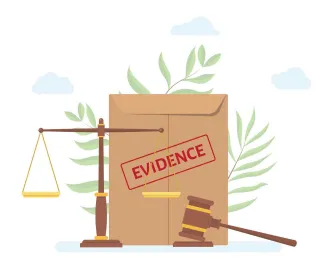The US Court of Appeals for the First Circuit affirmed the exclusion of a drug patent in a medical malpractice case, finding that the highly technical language of the patent would more likely confuse a lay jury than be probative of the issues in the case. Ward v. Schaefer, Case No. 22-1547 (1st Cir. Jan. 29, 2024) (per curiam).
In 2018 Edmund Ward sued his doctor, Ernst Schaefer, claiming that Dr. Schaefer had fraudulently induced Ward to participate in an experimental drug protocol and had otherwise failed to obtain his informed consent. Ward was born with a rare genetic disorder that caused his body to not produce a blood enzyme, lecithin-cholesterol acyltransferase (LCAT), that is critical for cholesterol production. As a result, Ward was at risk of kidney failure and would require either regular dialysis or a kidney transplant. When Ward met Dr. Schaefer, Ward’s condition was deteriorating. Dr. Schaefer suggested that Ward might be a suitable candidate for an experimental enzyme therapy with a drug called ACP-501, and Ward, under an expanded access application, was granted permission to start an experimental protocol.
Ward traveled from his home in Massachusetts to a National Institutes of Health (NIH) facility in Bethesda, Maryland, to receive infusions of ACP-501 and was monitored by Dr. Schaefer in Massachusetts. Unfortunately, Ward’s condition did not improve under the experimental protocol but instead worsened because he was compelled to delay dialysis treatments while using ACP-501. Ward stopped the experimental protocol; began regular dialysis; and sued Dr. Schaefer, the NIH doctors and the drug manufacturer. The district court dismissed the claims against most of the plaintiffs, but the claims of fraud and failure to obtain informed consent against Dr. Schaefer went to trial. Ward’s signed consent form was admitted into evidence at trial, but he claimed he had no memory of discussing it with his doctors or signing it. The jury found in favor of Dr. Schaefer on all claims. Ward appealed.
Ward argued that the court erred in refusing to allow the introduction of the patent for ACP-501 because the patent specified that it was a method for reducing arterial cholesterol in patients not suffering from LCAT deficiency. Ward argued that this language in the patent made clear that the drug was not appropriate for patients like him. The district court ruled that the patent was inadmissible because it had been offered without foundation, and that it had nothing to do with the issues of fraud and informed consent. On appeal, the First Circuit offered a different analysis but arrived at the same outcome, holding that the Fed. R. Evid. 403 balancing test “disposes of the matter.”
The First Circuit noted that the patent’s description of ACT-501 “is of absolutely no relevance to Dr. Schaefer’s alleged failure to apprise Ward of the potential risks and rewards of taking the drug through expanded access.” The Court went on to point out that even if the single sentence in the patent pointing to its exclusion for patients with LCAT deficiency could surmount Fed. R. Evid. 401’s low bar for relevancy, this is “grossly outweighed” under the Rule 403 balancing test by the likely “confusion created and time wasted” in including the entire document, which is rife with “irrelevant technicalities” and “littered with scientific jargon.” The Court colorfully described the patent’s multiple pages filled with lines of DNA sequences as an “alphabet soup,” and other pages containing “black-and-white figures that might seem like a Rorschach test to a lay jury.” Hence, the Court held that the district court did not abuse its discretion in refusing to admit the patent.
Practice Note: While this case is not a patent suit, it is of interest because the plaintiff tried to use a pharmaceutical patent in a medical malpractice case to show what the treating physician should have known. This is tactically related to the way in which patents are sometimes offered as evidence in product liability cases to show alternatives to the accused product or knowledge in the industry of problems with the prior art.



 />i
/>i
